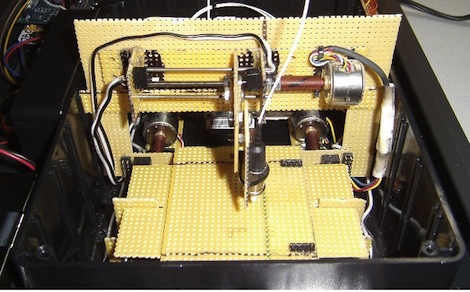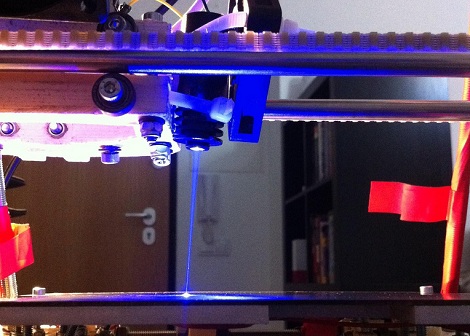
[peter] send in a reprappable laser cutter that he’s been working on. Even though he’s still having some problems with the accuracy of the beam over the entire square meter bed, it’s still an amazing build.
The build started off with a bunch of t-slot aluminum extrusions. After taking delivery of an absurdly large package containing a CO2 laser tube, [peter] started working on attaching motors to the axes. The optics travel the solid rods on pillow block bearings driven by the age-old stepper motor & timing belt drive.
The 1-square-meter of cut area on this machine is enormous for a homebrew laser cutter. [peter] discovered that once the necessary components are in place, it’s really how much aluminum you’d like to buy that becomes the limiting factor for the cut area. [peter] put the files for the 3D-printed carriages, brackets and mounts up on Thingiverse in the hopes his design can be improved by others.
















